We woke up to the sounds of rushing water from the Epupa Falls and went for a walk. We walked further down the valley to “the beach” where Stefaan hoped to see a crocodile, but he had no luck. It was interesting to see how even the most bulky and sturdy baobab trees were hanging on precariously on the sides of the ravine.
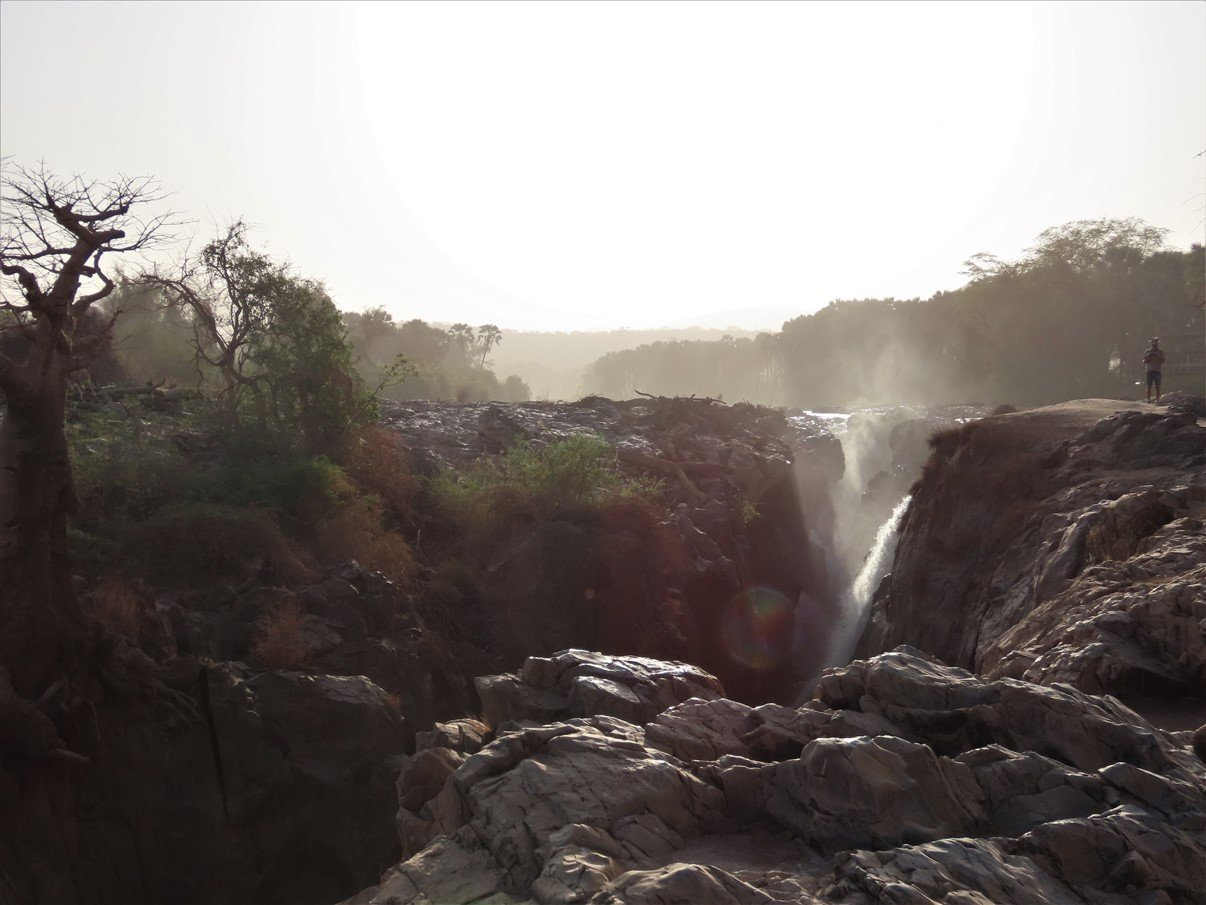
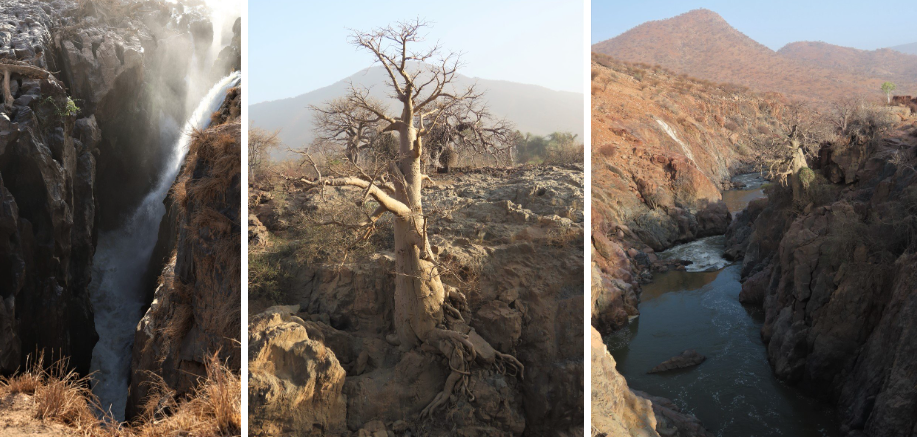
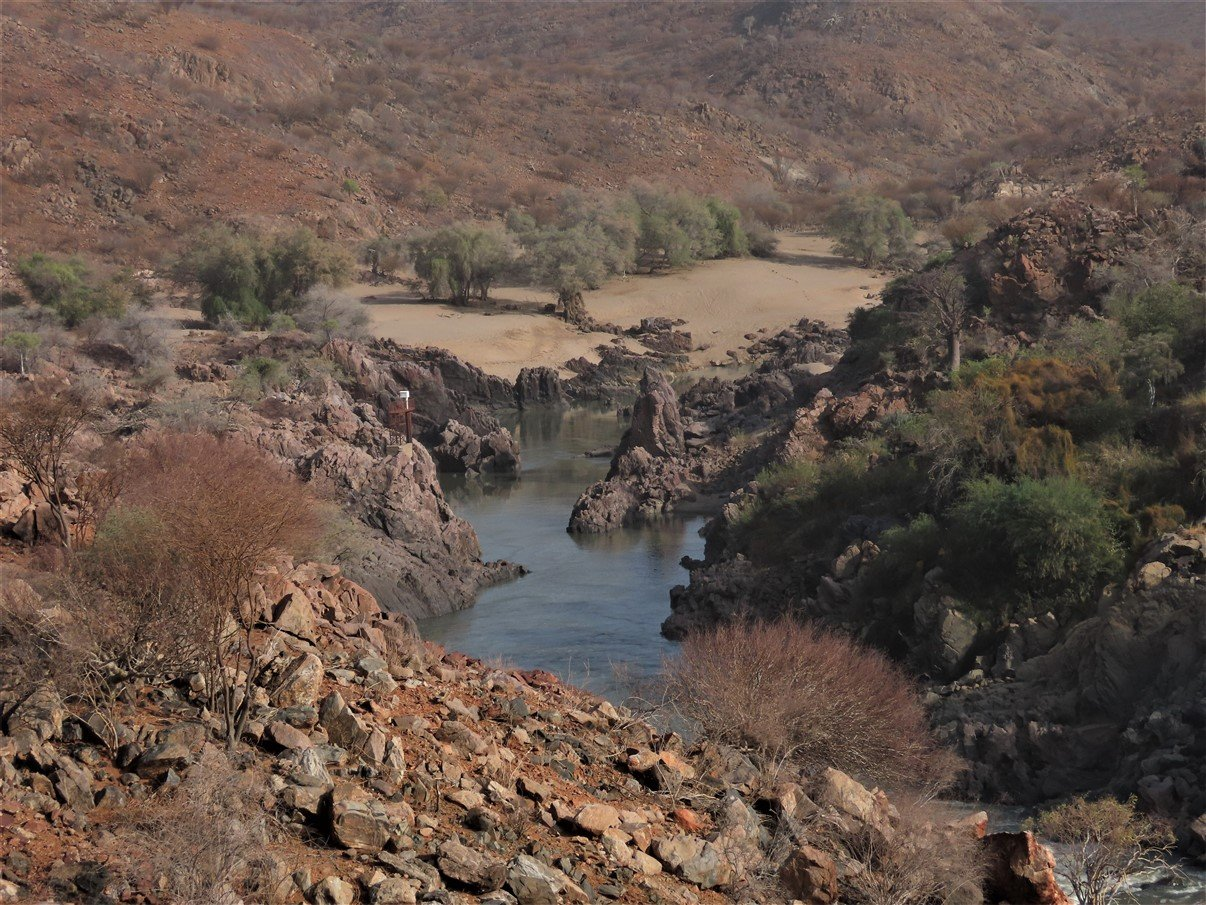
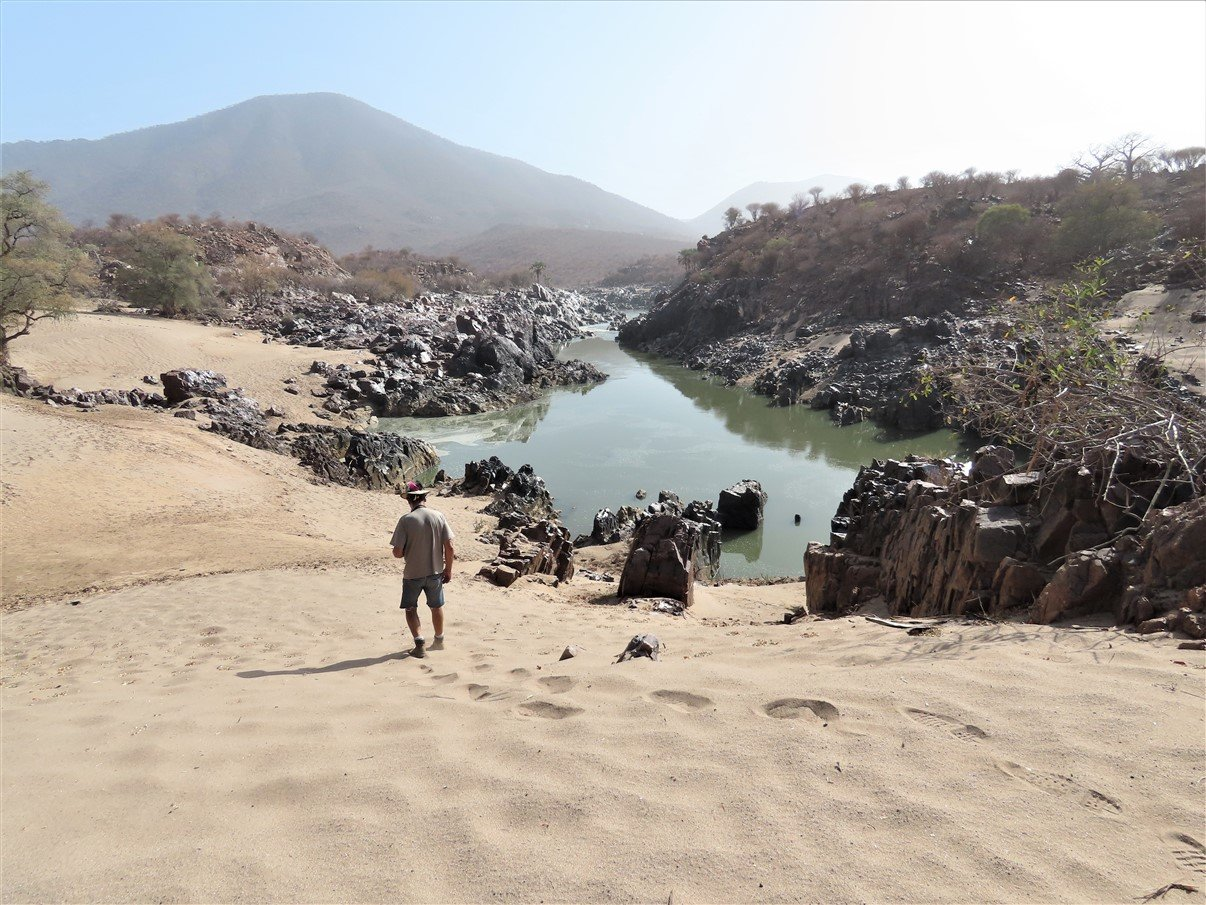
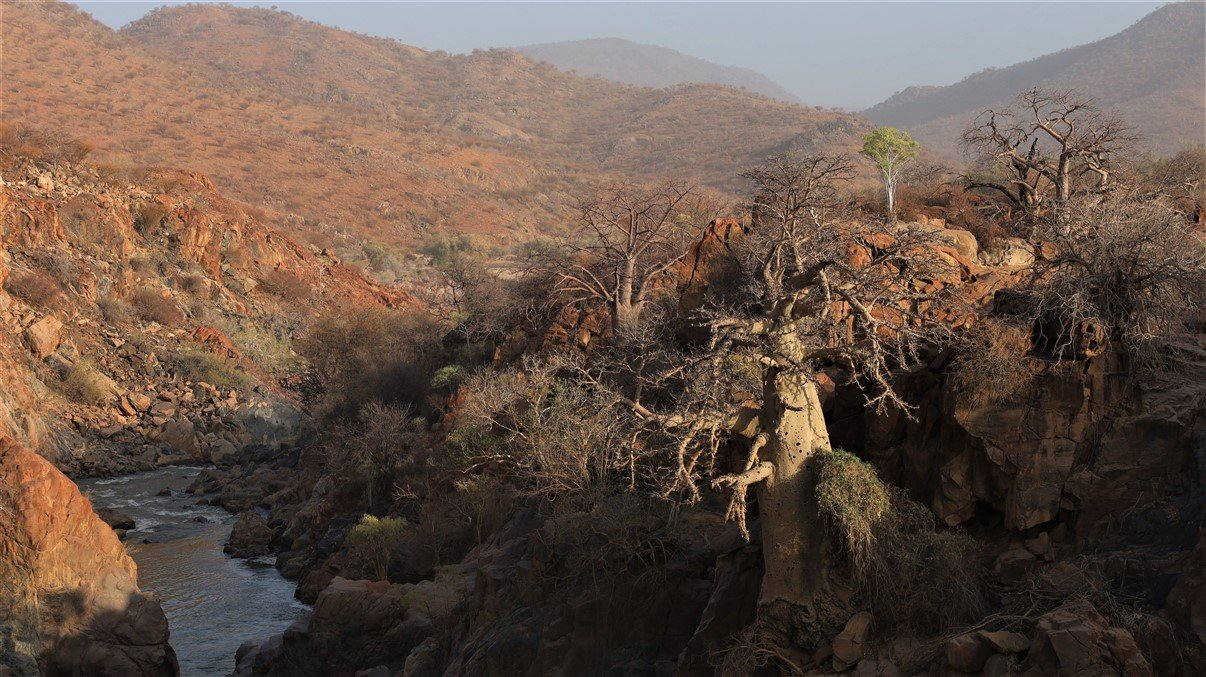
Lee had negotiated with the camp manager Delish, that we would visit a local Himba village nearby and around 11 am we gave Delish a lift to the shop where we went to buy ‘gifts’ to hand over when we arrived at the village.
We were welcomed by some traditionally dressed women and Delish acted as translator. We learned a few words: (my phonetic spelling of what it sounded like: Moro (hello), periveri (how are you), perinoa (I’m fine)) .
We learned about their hair, some of their traditions and dress code and were invited inside one of the huts to see how they live as families.
Besides the explanations about the beaded head dresses, the hide-skirts and the “perfume” they use when dressing up for a special occasion, it was interesting to learn that- according to what we were told – the Himba’s don’t send their children to school. Girls eventually grow up to look after the kraal and homes, the boys look after the cattle and goats. We kind of wondered if this was a touristy story or if it was real… seeing that we had seen many schools and children in school uniforms in the various dorpies we passed through. We don’t know if they were perhaps from other tribes… .
The other tribes closely related to the Himba are the Zemba and Herero. Although we might not really see a big difference between the Himba and the Zemba, the Herero women stand out by their beautiful dress code. Unfortunately the opportunity to meet any of them didn’t present itself. (Correction: leaving Brandberg there had been a souvenir stall manned by Himba and Herero people. We wanted to take a few photos of the ladies in their traditional dress but were told: only for a fee. At that moment we decided not too ... mistake because even though we saw a lot of Himba's afterwards, we saw no Herero women anymore, close enough to take photos)
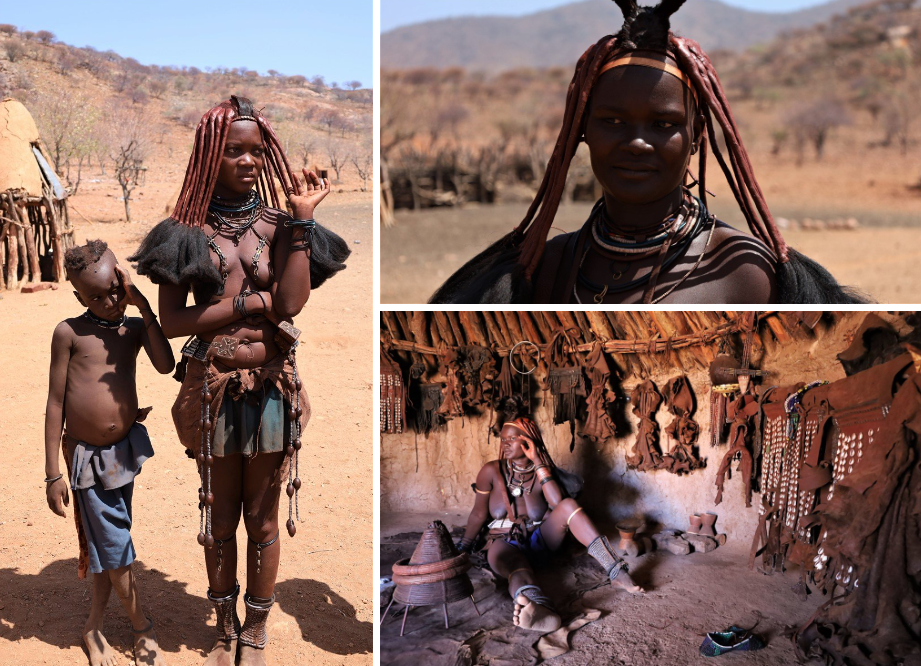
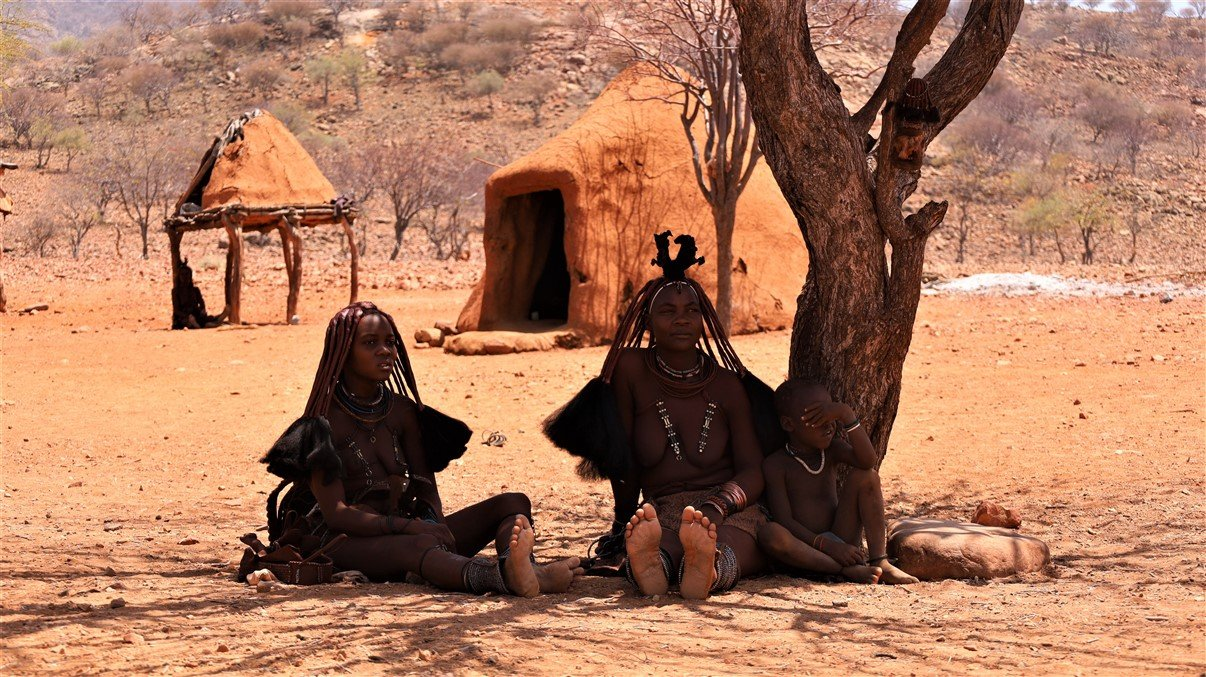
We took our leave, dropped Delish off at home and left Epupa Falls towards Ruacana.
The gravel road took us through a landscape of rocky and sandy hills with dried shrubs and trees that would dip regularly to run alongside the Kunene River with its lush green belt of palm and other trees flourishing on the river banks.
We stopped along the way for a cold beer at a riverside pub/campsite and the manager was very informative and chatty about his life on the river.
A bit later in the afternoon, we found ourselves a secluded spot along the Kunene river and made camp. Master negotiator Lee arranged with a small local Himba group a fee to park alongside the river. We paid and enjoyed a peaceful evening and beautiful sunset along the Kunene river (be it observed by little groups of curious boys playing and watching us from a little distance away .)
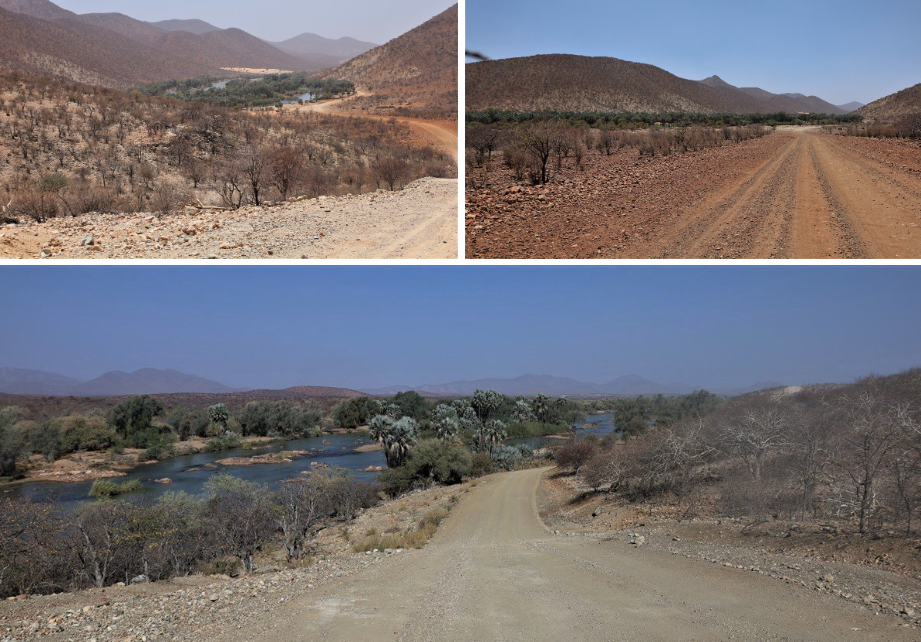
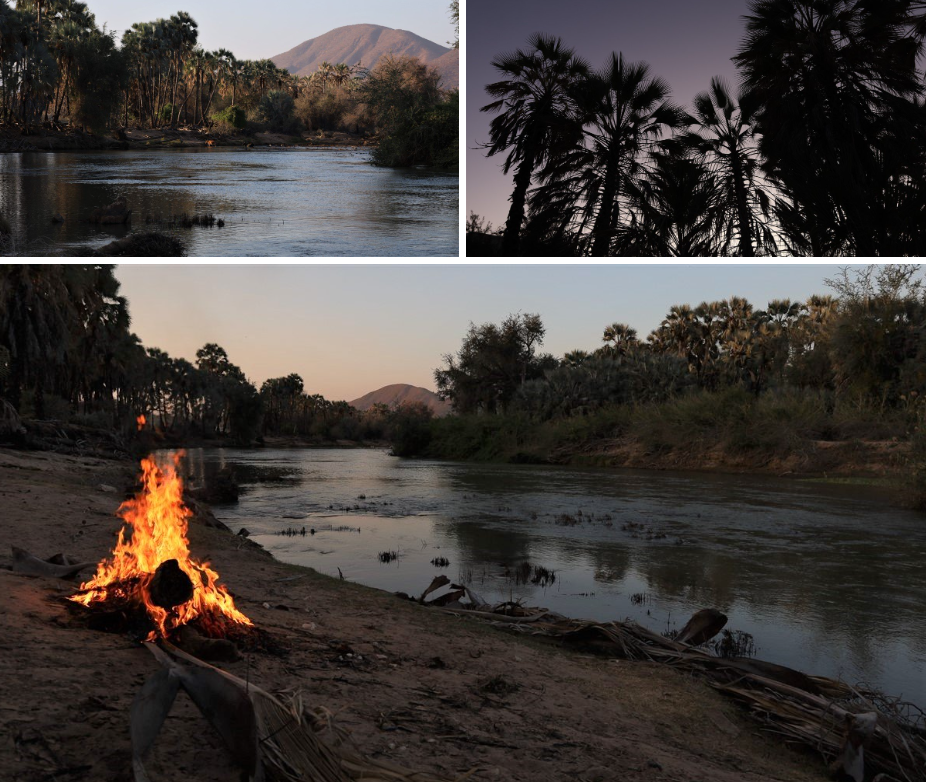
Next morning, just when we wanted to get comfy along the river’s edge with a cup of coffee, the Himba negotiator of the previous evening, joined by a few other women and children, came to sit just a few meters away while we were having coffee. Long story short: the manager at the beer pub down the river had told us how his aunt takes on a role as doctor/nurse and local tribe people (Himba’s) come to her for medical advice. In this case…. no difference. The few women sat very patiently while we tried to ignore/avoid eye contact, until Lee got up from her chair and could just NOT avoid eye contact to say hello. That was it: although there was definitely a gap in communication (not speaking the same language) sign language and pointing to body parts eventually brought the message home: they were looking for medical help. The one little boy had a sore knee (possibly from a sting), the other one had a sore tummy. Lee got into Dr Quin mode and provided some relief for the one little boy but couldn’t really assist with the other boy (ointments and rubs are one thing you can help with… tablets and other medication is something you really don’t want to administer). Eventually they seemed to be grateful for the little bit of help Lee could provide and they left. Shortly thereafter we packed up and left too and continued our trip towards Ruacana.
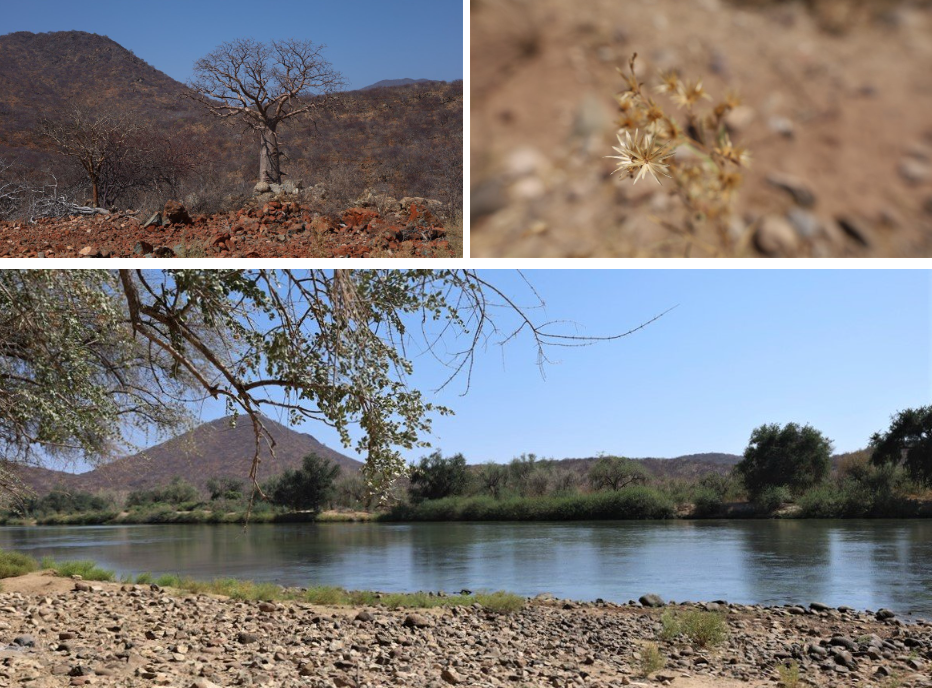
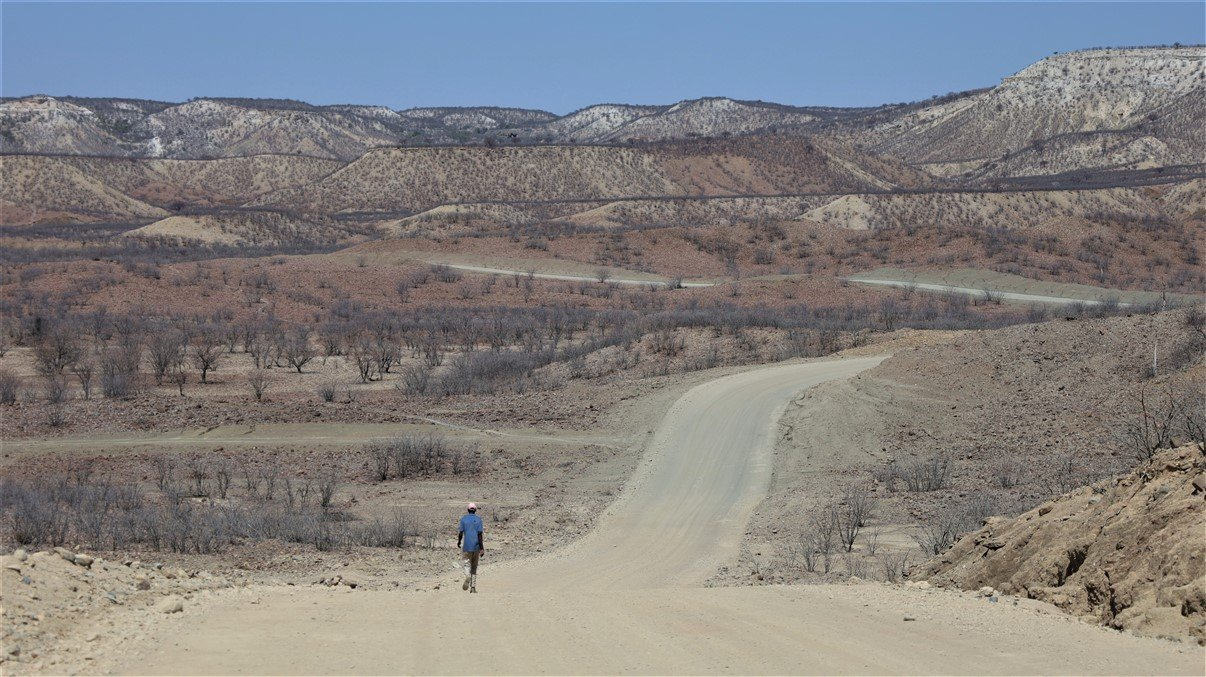
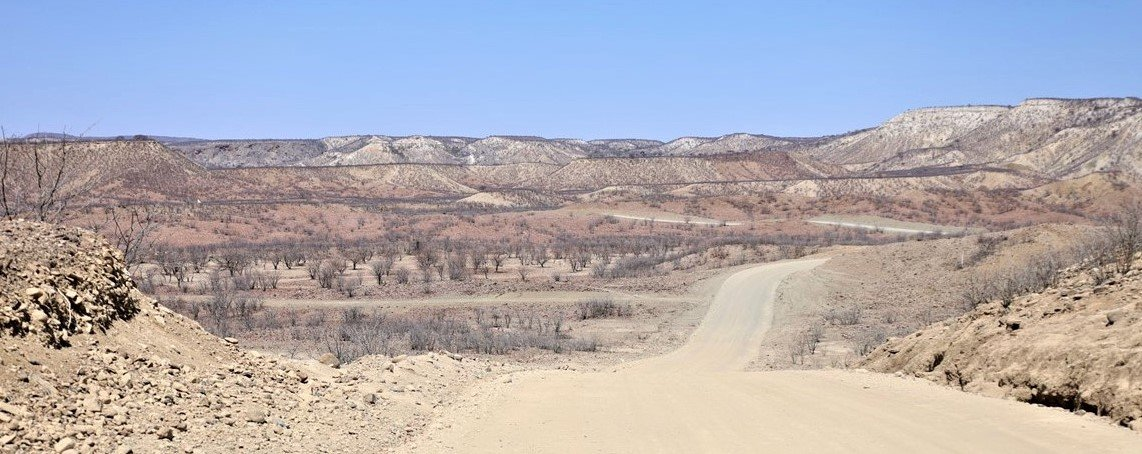
A not so nice experience that we were faced with in this part of the world is the continuous begging. It was something we had not experienced in other parts of Namibia. It had started along the rough roads lined with Himba settlements in Kaokoland where children came running when they saw us (or any other tourist vehicle I think) to wave us down and then ask for anything: food, money, pens, soccer balls,… . Here, on the northern side of Namibia, it seemed to be part of life: wherever you stop, locals beg, which makes it pretty annoying. There were often moments when we would just want to pull off the road next to the river to enjoy the view while having a cup of coffee and it got spoiled by some locals begging for food or money. We do understand poverty, but we’ve been in other parts of Namibia where there is poverty too, but where the locals do not harass the tourists.
We didn’t like it and very often we would eventually just pass a nice spot, just to avoid being stopped by a local. You never know if a conversation is a genuine conversation about them and us, or if it’s going to end up in them asking for food, money,…anything!
When we passed through one of the dorpies in that area, we passed again… a couple of tourists on their bike. This time they were South Africans. Hats off…. they’re braver than I am…. I would never take on Africa on a bike! Definitely not as a woman. And strange enough: the begging and harassing was also the biggest downside of their cycling holiday.
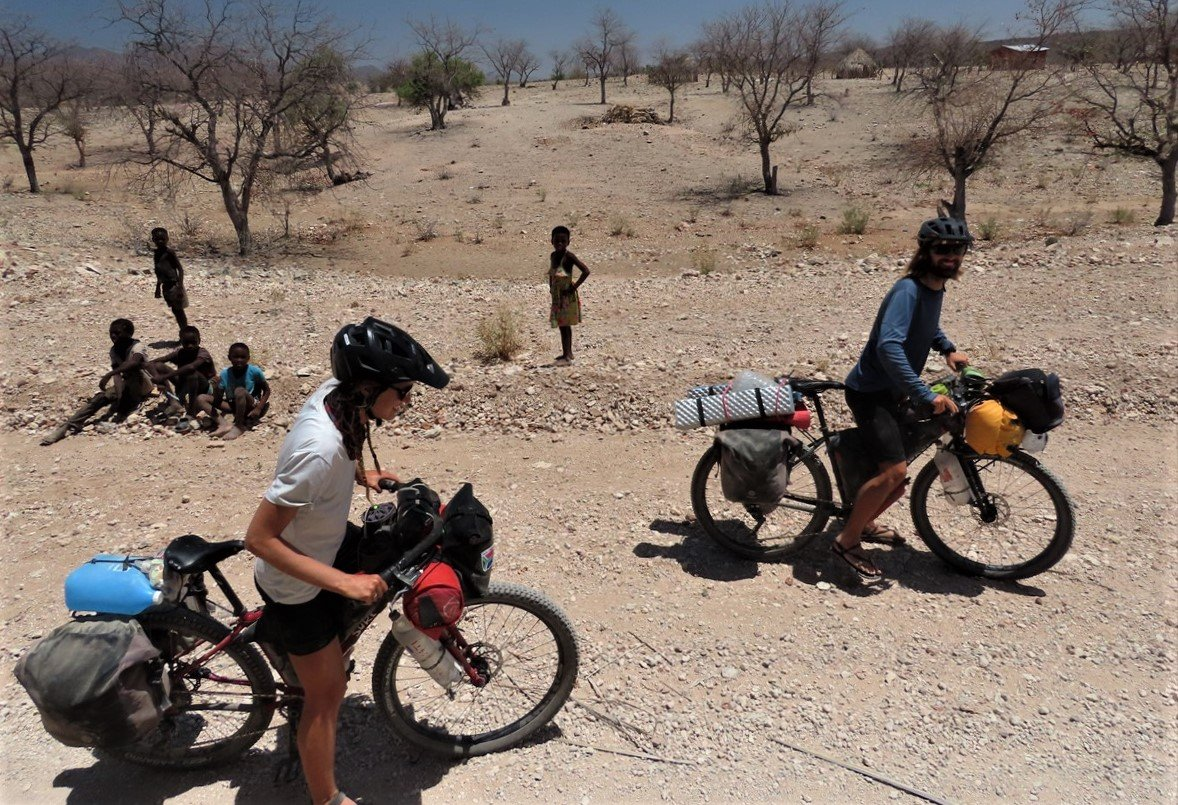
At Ruacana we booked in at the local community campsite with beautiful views over the dam, although all the other facilities left much to be desired. Luckily we are mostly self contained so most of the time we’re not too much concerned about the ablutions or electricity supply.
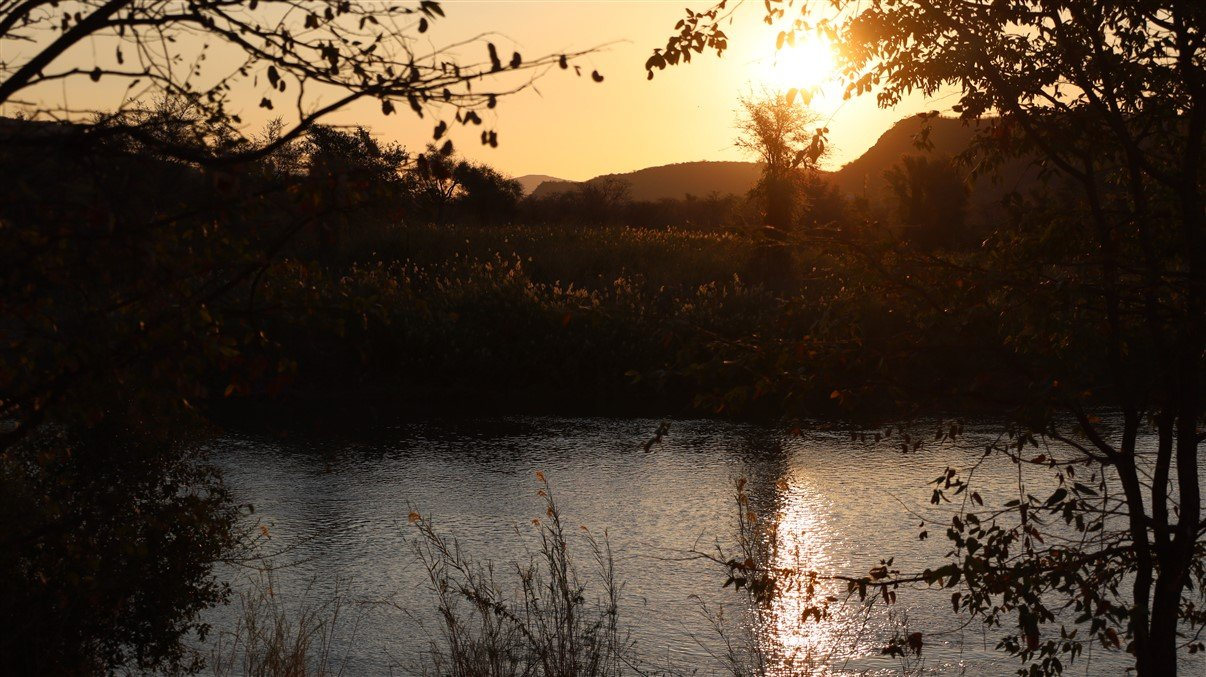
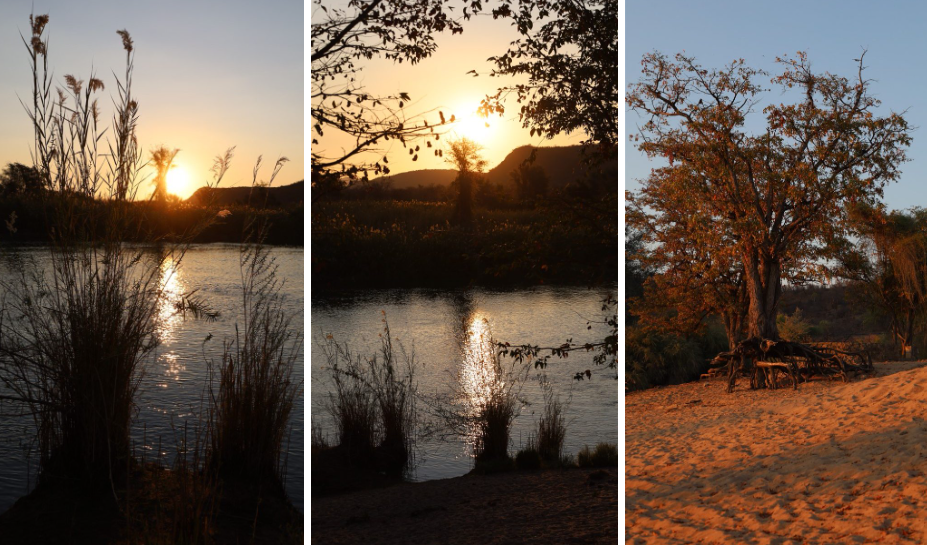
Next morning, we packed up and drove to the falls. There was unfortunately not much water in the falls, but the rockface was still impressive (top photo). Later Gavin showed us a video clip of the falls in full flood and that was quite a sight (video courtesy of Gondwana Collection).
Even though there was not much water, we got some pics of the various lizards whizzing around over the rockfaces and the dilapidated buildings.
To see the falls you pass through the border post with Angola, but instead of turning right to the actual Angolan border post, you drive straight till you hit a small parking lot. Unfortunately, like so many places we have visited in the past 18 months or so, there is very little maintenance done and rubbish floats around everywhere.
One monkey was very territorial and when Stefaan got closer with the camera, he started, fairly aggressively, jumping up and down a rock in a mock attack mode. I think however, he realised he was the smaller of the two and he kept to the attitude without the actions!
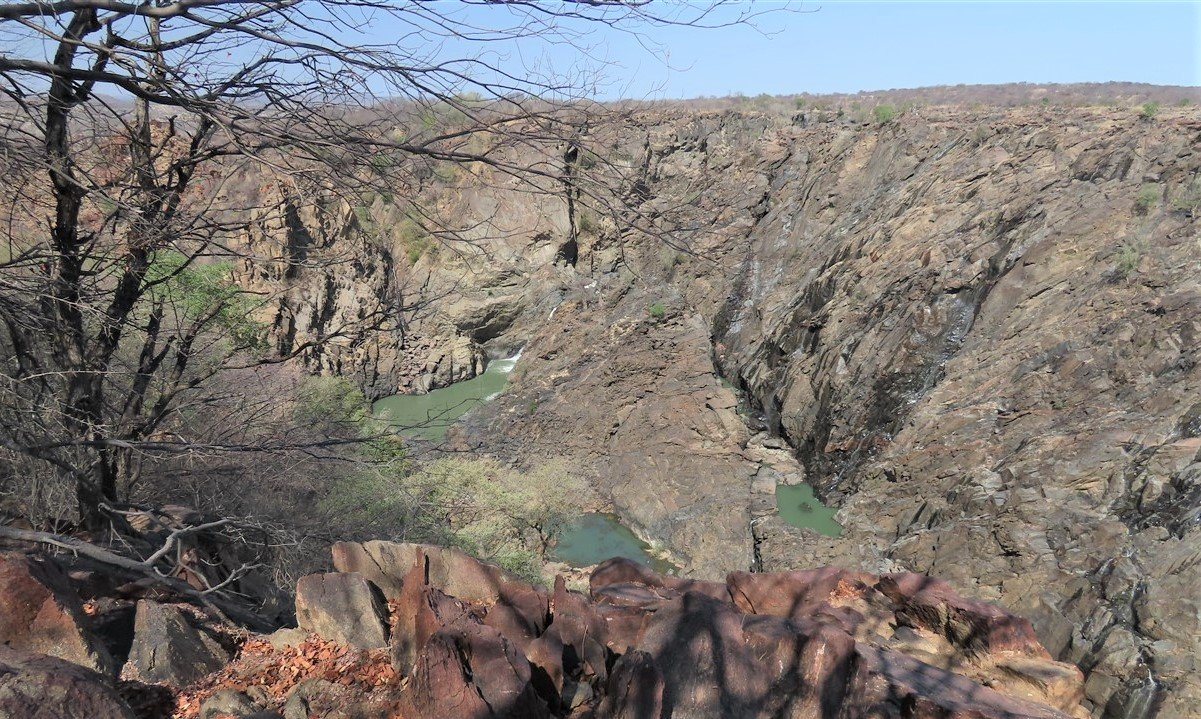
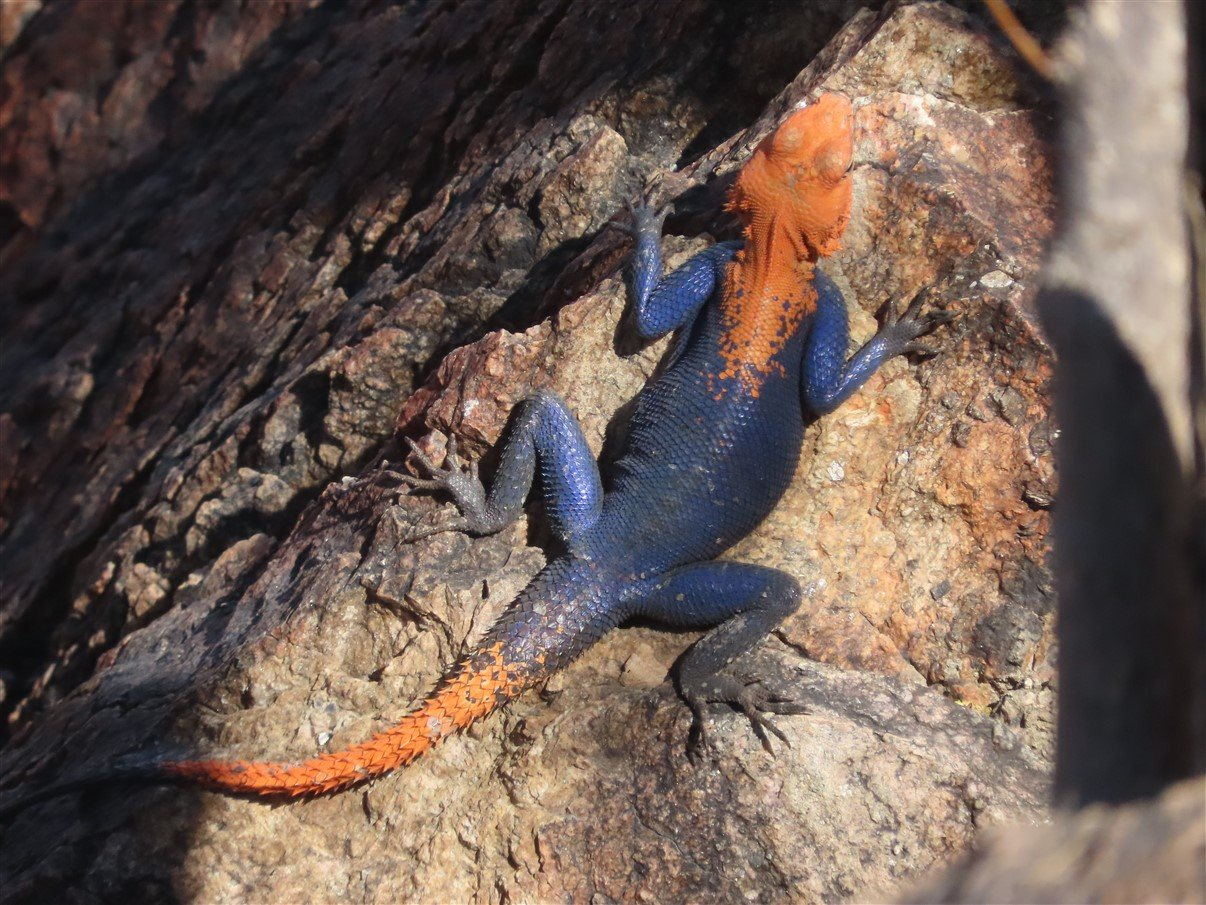
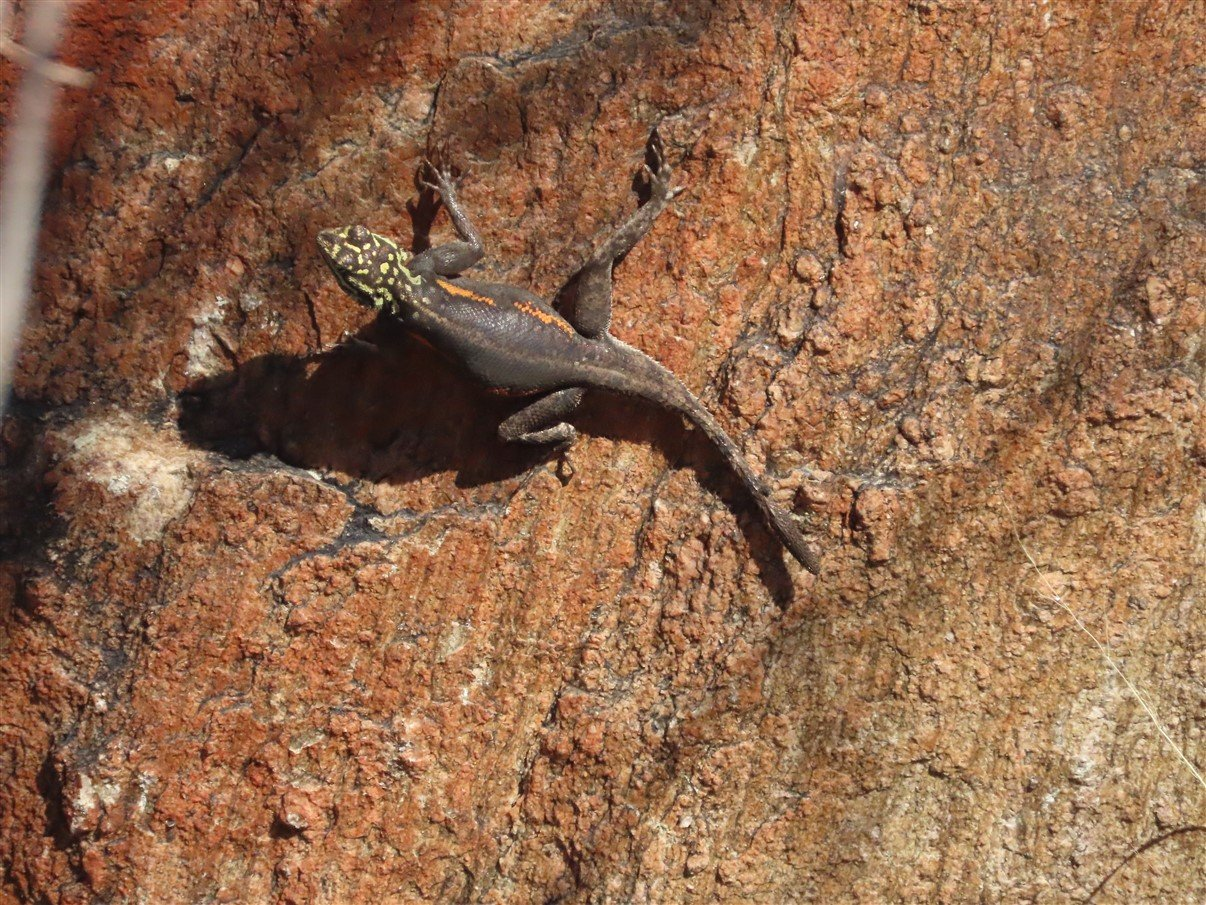
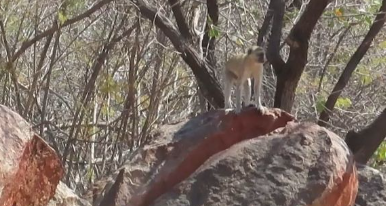
We went shopping in Oshifo and continued to Outapi to visit the Ombalantu Baobab tree. Our guide was very friendly and informative and it was refreshing to chat with someone who looks at history in an objective way. He was very openminded and honest about tribal warfare when he was telling how the tree was used by some communities to hide women and children inside the tree to prevent rival tribes to kidnap them! The tree of course later got other functions like army chapel, bar, etc.
Our guide picked a fruit and opened it up and then he explained that the inside of the fruit is the substance we know as “kremetart” (cream of tartar), which gets used in baking. I never knew that! One is never too old to learn!
When our guide mentioned sizes and dimensions, we got into a small discussion about how he would know that. Stefaan got his drone out to measure the tree and now he knows for sure!
He left the premises to us to look after for a while, till he got back from fetching gas bottles. By then it was fairly late in the afternoon and after a short fee-negotiation (no water or electricity in the campsite) we stayed on and camped under the historical baobab tree.
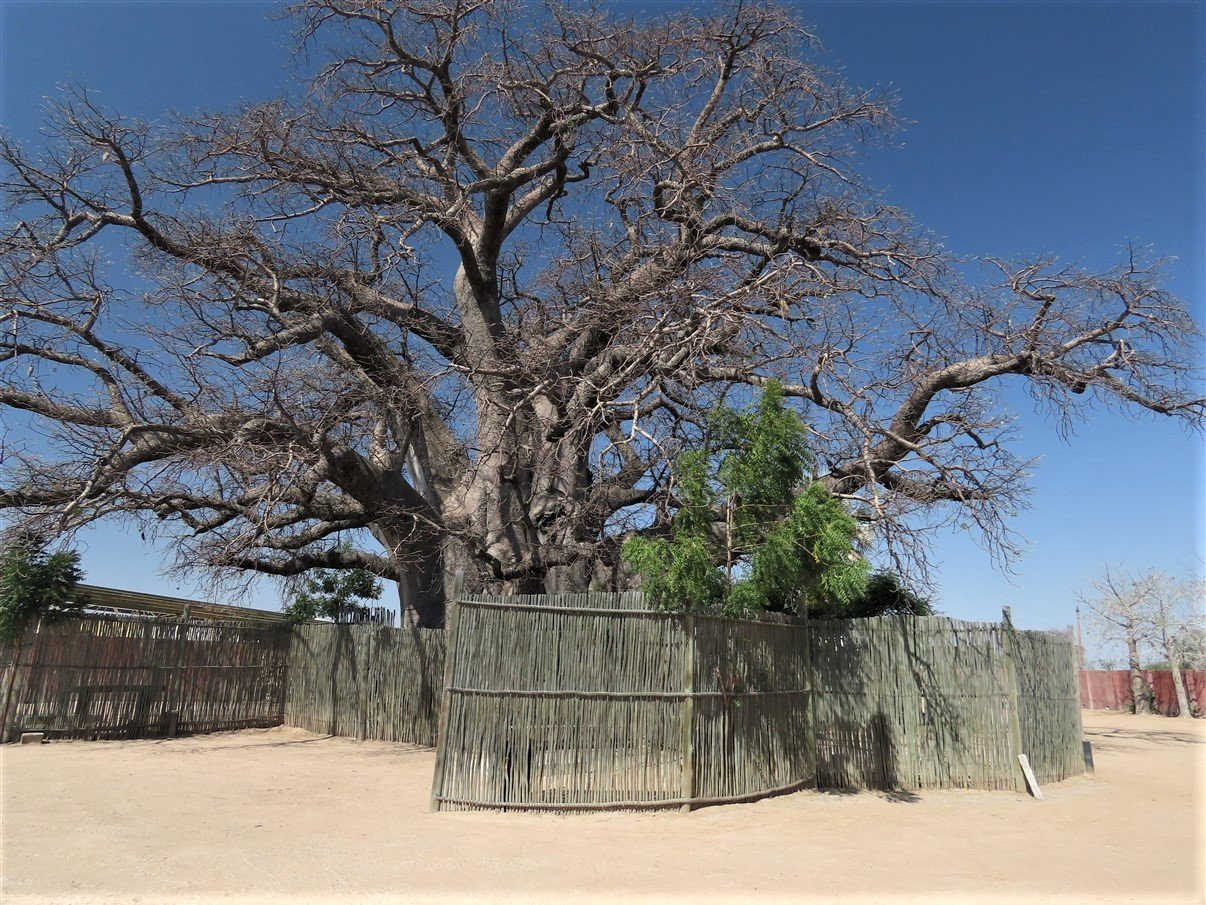
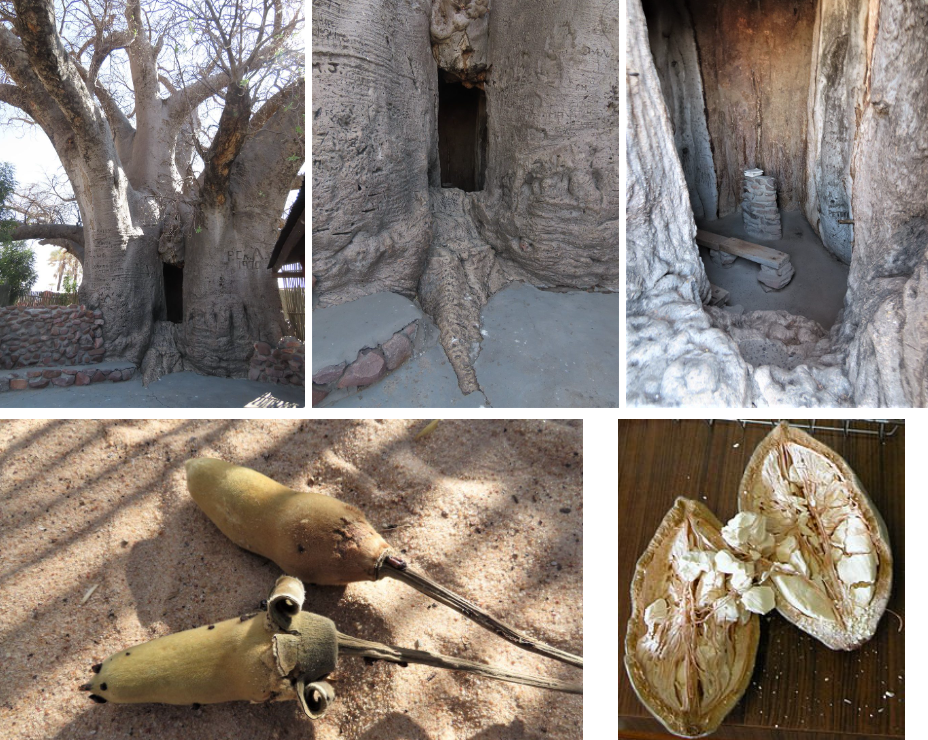
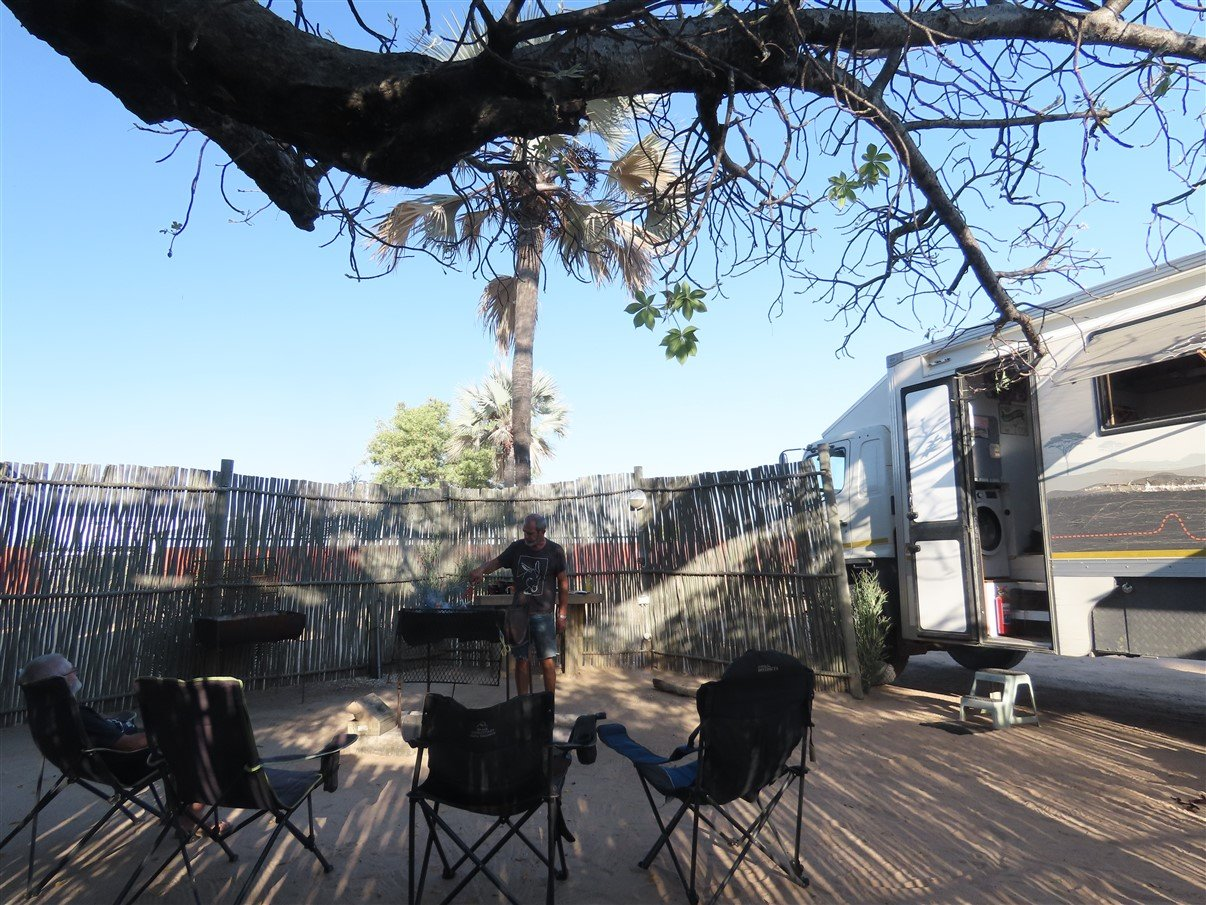
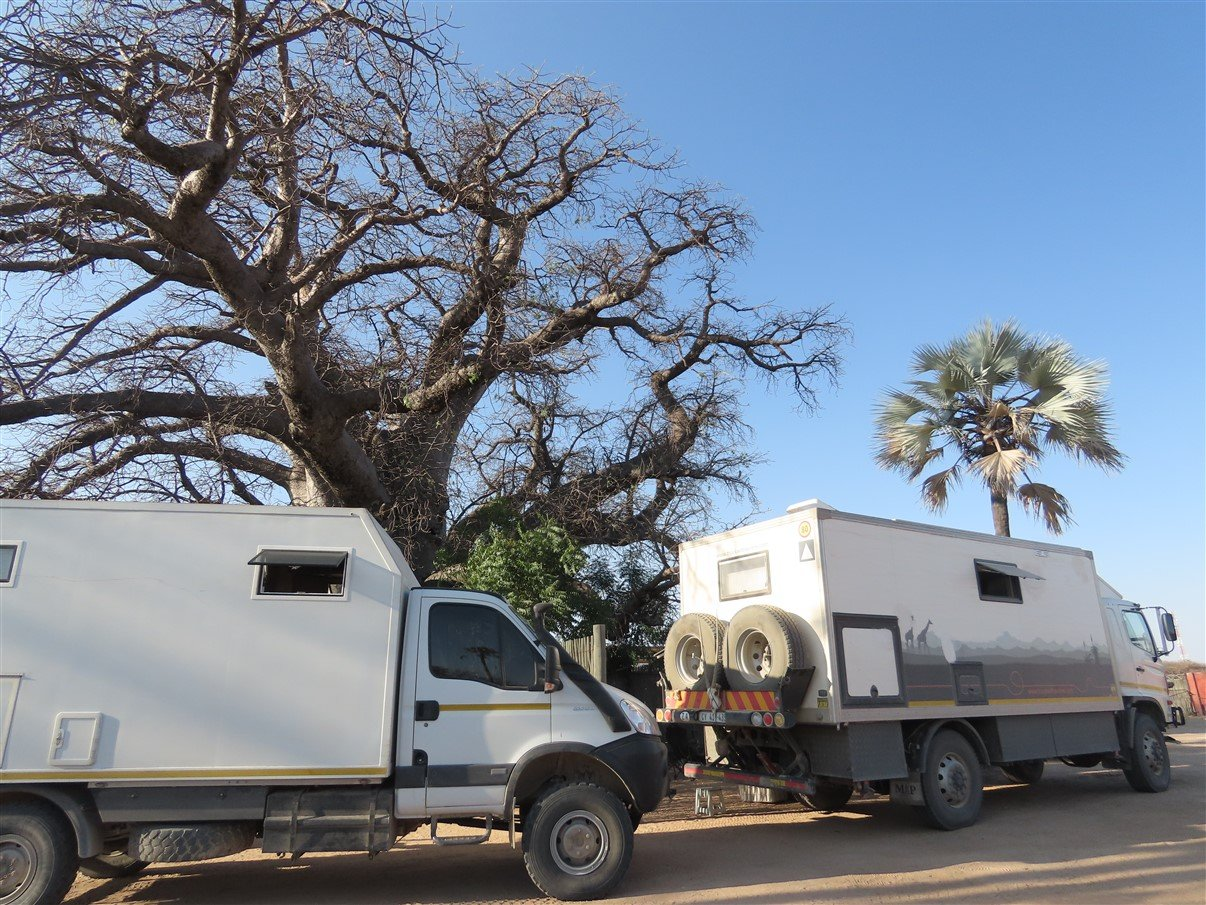
The following morning we travelled further south, passing more Baobab trees, whereof some have “historical value” attached to them. Some most probably rightfully so. Seeing that the big ones are easily a few hundred years old, they must have been part and parcel of human development. But unfortunately they don’t get the attention and maintenance they deserve. The Ombalantu Baobab in Outapi had at least some fencing around and 3 or 4 campsites were developed there, but services were lacking. Some other Baobabs we saw within built up suburban area were surrounded by taxi ranks, neglect and dirt.
We passed the vet line again where Stefaan unfortunately had to leave his cow and oryx horns behind.
We camped at a rest stop along the road side and, the following day we covered the last 60 km to the Galton Gate and entered Etosha National Park.
For more photos, clips and videos follow us on


Epupa Falls to Etosha National Park